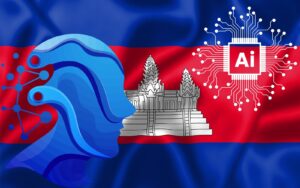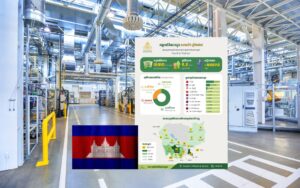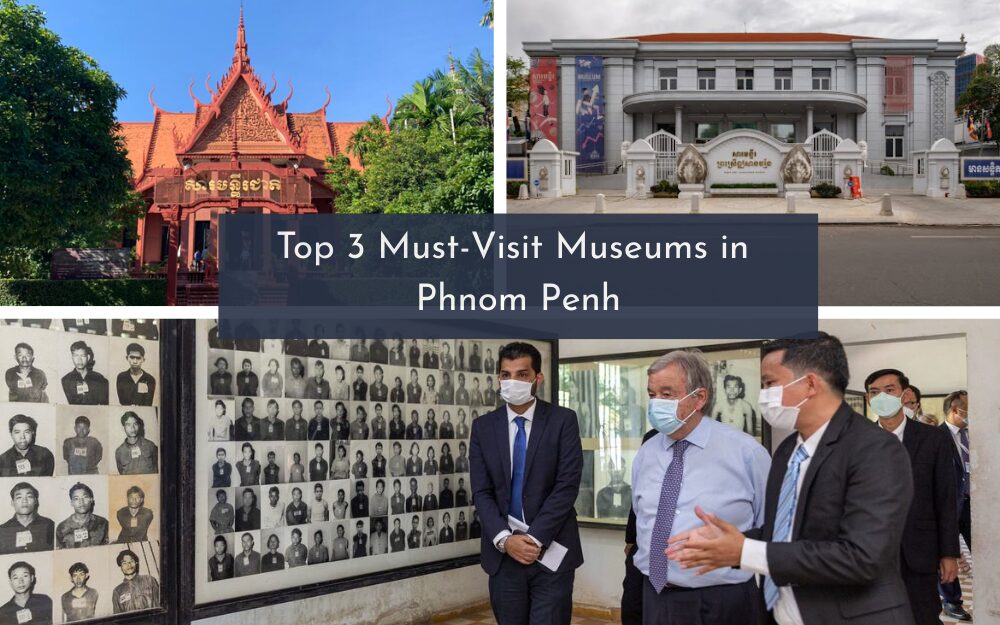
Phnom Penh, the vibrant capital of Cambodia, is a city where history and modernity intertwine. For those seeking a deeper understanding of the nation’s rich cultural heritage and its poignant past, a visit to its museums is essential. Among the many institutions that preserve and showcase Cambodia’s story, three stand out as must-visit destinations: the National Museum, the Sosoro Museum, and the Toul Sleng Genocide Museum. Each offers a unique and compelling perspective on different facets of Cambodian history and culture, leaving visitors with a profound and lasting impression.
1. The National Museum: A Treasure Trove of Khmer Art and History
Stepping into the National Museum is like entering a realm of ancient grandeur. Housed in a stunning traditional Khmer-style building with ochre walls and elegant courtyards, the museum is home to the Kingdom’s premier collection of Khmer art and artifacts. From magnificent Angkorian-era sculptures to intricate ceramics, textiles, and ethnographic objects, the museum offers a comprehensive journey through Cambodia’s artistic and cultural evolution, spanning centuries.
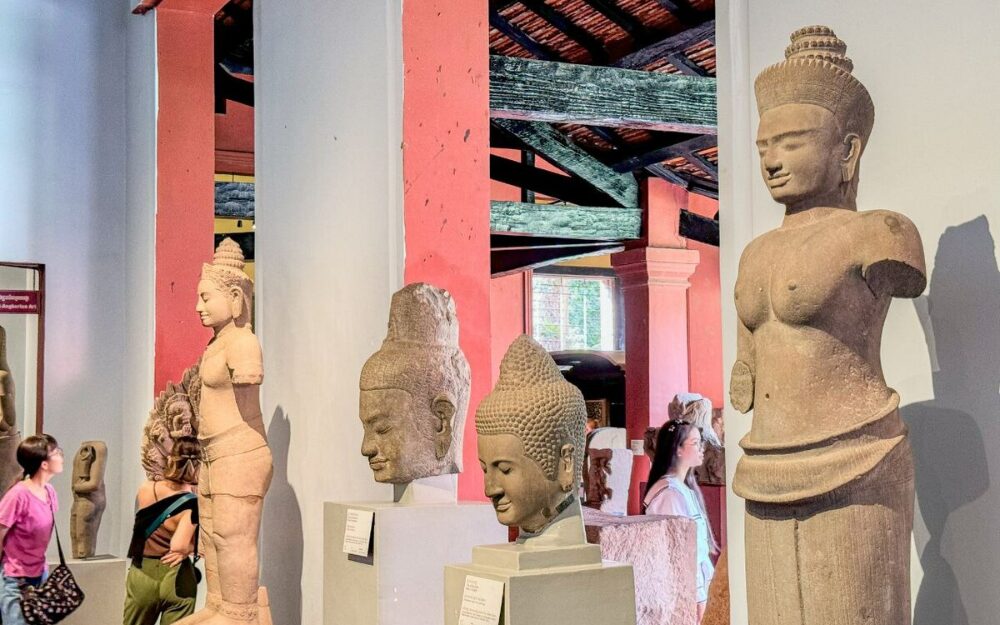
What to expect:
- 1. Angkorian Sculpture Gallery: Marvel at the imposing stone sculptures of gods, goddesses, and mythical creatures from the glorious Angkor period (9th-15th centuries). The sheer scale and intricate detail of these masterpieces offer a glimpse into the advanced artistry and religious beliefs of the Khmer Empire. Highlights include impressive statues of Jayavarman VII and various Hindu and Buddhist deities.
- 2. Prehistoric and Pre-Angkorian Artifacts: Discover the early history of Cambodia through a collection of bronze tools, pottery, and funerary objects dating back to prehistoric times and the Funan and Chenla periods. These artifacts provide valuable insights into the development of civilization in the region before the rise of Angkor.
- 3. Post-Angkorian Art and Ethnography: Explore the artistic traditions and daily life of Cambodia in the centuries following the decline of Angkor. Exhibits showcase royal regalia, religious artifacts, traditional costumes, and tools, offering a broader understanding of Cambodian culture beyond its monumental past.
- 4. Royal Barge: Admire the impressive Royal Barge, a testament to the intricate craftsmanship and ceremonial traditions of the Cambodian monarchy.
Why it’s a must-visit: The National Museum provides an essential foundation for understanding Cambodia’s rich cultural heritage. Its extensive collection of Khmer art, particularly the Angkorian sculptures, is world-renowned and offers a powerful connection to the country’s golden age.
2. The Sosoro Museum: Unraveling the Story of Cambodia’s Riel
For a unique and insightful exploration of Cambodia’s economic history and its impact on everyday life, the Sosoro Museum is a captivating destination. Located in a beautifully restored colonial-era building that once housed the National Bank of Cambodia, the museum tells the fascinating story of the Cambodian Riel, the national currency. Through engaging exhibits and interactive displays, visitors can trace the evolution of money in Cambodia, from early forms of exchange to the modern Riel.
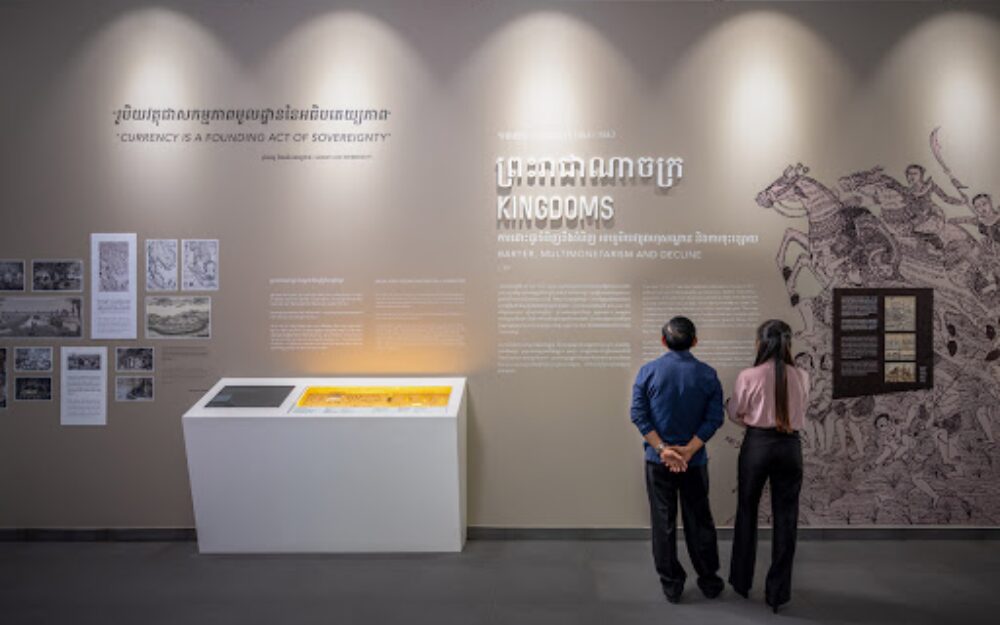
What to expect:
- 1. Early Forms of Exchange: Learn about the pre-currency era and the various goods and commodities used for trade, providing context for the introduction of formal currency.
- 2. The French Indochina Period: Discover the influence of French colonialism on Cambodia’s monetary system and the introduction of the French Indochinese Piastre.
- 3. The Birth of the Riel: Understand the historical context surrounding the creation of the Cambodian Riel after independence and its significance as a symbol of national sovereignty.
- 4. The Khmer Rouge Era and its Impact on Currency: Explore the devastating impact of the Khmer Rouge regime on Cambodia’s economy and the abolition of money during that period. This section offers a sobering yet crucial understanding of a dark chapter in Cambodian history.
- 5. The Re-establishment of the Riel: Witness the efforts to reintroduce and stabilize the Riel after the fall of the Khmer Rouge, marking a period of recovery and rebuilding.
- 6. Interactive Exhibits: Engage with hands-on displays that explain concepts like inflation and monetary policy in an accessible way.
Why it’s a must-visit: The Sosoro Museum offers a fresh and often overlooked perspective on Cambodian history through the lens of its currency. It provides valuable insights into the country’s economic development, political transitions, and the daily lives of its people, making it a truly unique museum experience.
3. The Toul Sleng Genocide Museum (S-21 Prison): A Stark Reminder of a Tragic Past
A visit to the Toul Sleng Genocide Museum, also known as S-21 Prison, is a deeply moving and profoundly important experience. This former high school was transformed into the Khmer Rouge’s most notorious torture and execution center. Preserved in its original state, the museum serves as a chilling testament to the atrocities committed during the regime’s brutal rule from 1975 to 1979.
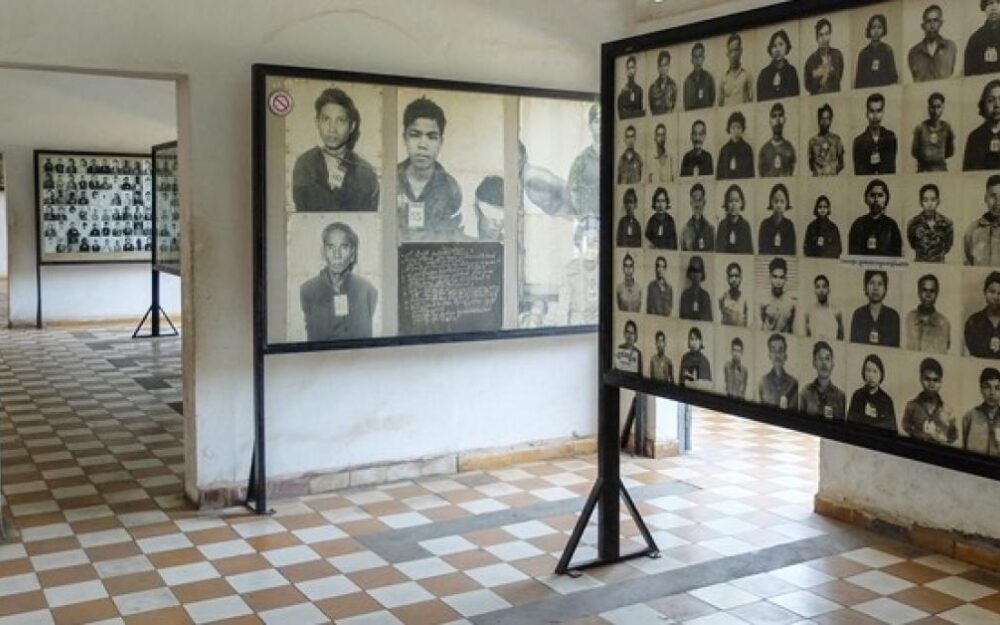
What to expect:
- 1. Classrooms Transformed into Prison Cells: Witness the small, stark cells where thousands of innocent men, women, and children were imprisoned and subjected to unimaginable torture.
- 2. Torture Devices and Instruments: See the actual tools of torture used by the Khmer Rouge, offering a horrifying glimpse into the cruelty inflicted upon the victims.
- 3. Photographic Archives: Confront the haunting photographs of the victims, meticulously documented by the regime before their execution. These images serve as a powerful and unforgettable reminder of the human cost of the genocide.
- 4. Personal Accounts and Testimonies: Read excerpts from the confessions (often forced) and learn about the experiences of the survivors, providing a deeply personal and emotional connection to this tragic period.
- 5. Exhibits on the Khmer Rouge Regime: Gain a deeper understanding of the ideology, policies, and leadership of the Khmer Rouge, contextualizing the horrors that unfolded within the walls of S-21.
Why it’s a must-visit: While a visit to Toul Sleng is emotionally challenging, it is an essential experience for understanding the darkest chapter in Cambodia’s modern history. It serves as a powerful reminder of the importance of human rights, justice, and the prevention of such atrocities. It is a place for reflection, remembrance, and learning from the past to ensure that such horrors are never repeated.
These three museums offer a compelling and multifaceted exploration of Phnom Penh and Cambodia’s rich history and complex past. From the artistic grandeur of the National Museum to the unique economic narrative of the Sosoro Museum and the sobering reality of the Toul Sleng Genocide Museum, each institution provides a vital piece of the Cambodian story. Visiting these sites is not only an educational experience but also a deeply moving journey that fosters a greater understanding and appreciation for the resilience and spirit of the Cambodian people. No trip to Phnom Penh is truly complete without experiencing the profound insights offered by these must-visit museums.
Sources: SOSORO – Cambodia’s Museum of Economy and Money | UNESCO | Ministry of Information
![]()



